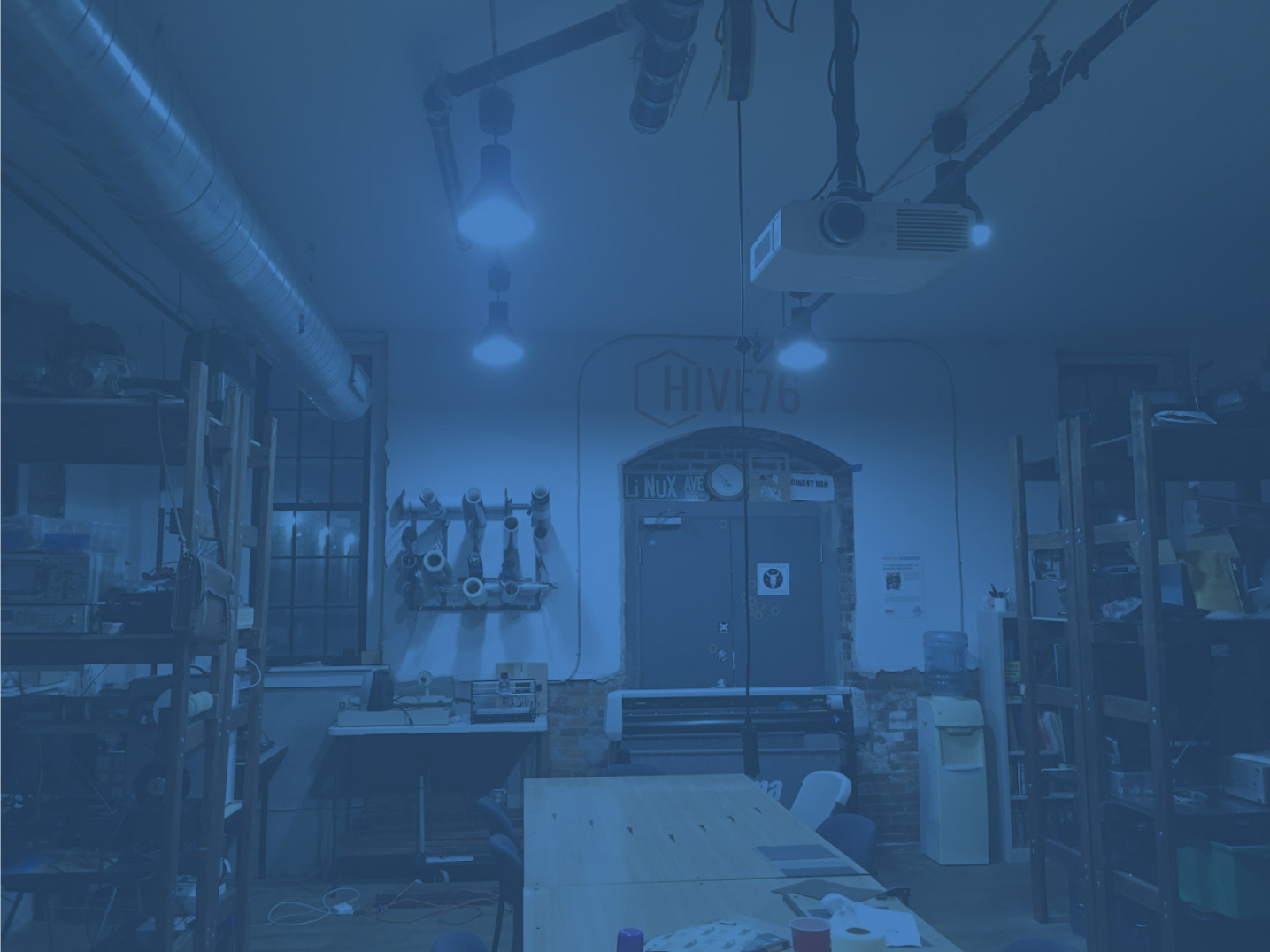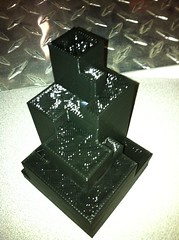Growing up, my dad worked overseas for the State Department so we moved all over the Middle East.  I always wanted to know how everything worked, and my dad had a hint of an interest in electronics and other hobbies, but resources were always a little limited and there weren’t any skilled mentors I could learn as much as I wanted from. I recall spending a lot of time coming up with wacky invention ideas, most of which in hindsight are probably infeasible, but coming up with the ideas was always half the fun anyway. My dad would bring home articles from magazines on topics he thought I’d find interesting, like building simple robots, or making red jello lasers. Periodically I would get an inkling to try realizing one of my inventions and I would save up my allowance money, eventually putting together an order from a surplus catalog in the States. It would take 2 weeks for my snail-mail order to arrive there through the diplomatic pouch, and another 2 weeks to receive my parts, and as you can imagine of a young kid, I usually ended up getting bored with waiting and abandoned the original idea for something I could do much sooner. I had a great set of books, a silver hard-bound set called “How Things Work”, which was wonderful for fueling the inner mad scientist in me. In about 4th grade I remember spending a fair bit of time designing the space ship that I hoped would eventually rescue me from homework and school, and also allow me to explore and perhaps begin colonizing Titan, one of the moons of Saturn. (Needless to say, that one hasn’t panned out. Yet.)
I always wanted to know how everything worked, and my dad had a hint of an interest in electronics and other hobbies, but resources were always a little limited and there weren’t any skilled mentors I could learn as much as I wanted from. I recall spending a lot of time coming up with wacky invention ideas, most of which in hindsight are probably infeasible, but coming up with the ideas was always half the fun anyway. My dad would bring home articles from magazines on topics he thought I’d find interesting, like building simple robots, or making red jello lasers. Periodically I would get an inkling to try realizing one of my inventions and I would save up my allowance money, eventually putting together an order from a surplus catalog in the States. It would take 2 weeks for my snail-mail order to arrive there through the diplomatic pouch, and another 2 weeks to receive my parts, and as you can imagine of a young kid, I usually ended up getting bored with waiting and abandoned the original idea for something I could do much sooner. I had a great set of books, a silver hard-bound set called “How Things Work”, which was wonderful for fueling the inner mad scientist in me. In about 4th grade I remember spending a fair bit of time designing the space ship that I hoped would eventually rescue me from homework and school, and also allow me to explore and perhaps begin colonizing Titan, one of the moons of Saturn. (Needless to say, that one hasn’t panned out. Yet.)
I really had an interest in how almost everything worked, picking up as many things as I could. One day my dad brought home the first Magic Eye picture I’d ever seen, and after struggling with it for an hour it was an incredible feeling when the image of the earth finally popped out at me in all its 3D splendor, and I’d been bitten by the 3D bug. Living where I did, we didn’t have access to hardware stores or Radio Shack, but there were petrified forests, ripe with geodes and other marvels of geology that I loved to learn about. In slightly later years I learned some interesting things about chemistry, and am probably fairly lucky to have all of my fingers and toes. After figuring out how to make a surprisingly effective blowgun with quite nasty darts, I got a taste of what fun working with projectiles can be, going on in much later years to build a high-power rocket that is fired from a pneumatic cannon.
I was always interested in computers, and had a burning desire to learn how to write my own software. In elementary school I stumbled onto HyperCard (an incredible thing at the time), and I was off and running teaching myself some basics of algorithms, and writing simple tools and games. (I was never particularly interested in actually playing games, much preferring to explore and learn, or take things apart and dream of what I could do with the pieces.) Discovering programming was a bit of a boon for me, because it was a way of inventing for free — no materials to buy or wait for in the mail, no tools to wear out, if I could dream it and if I had the motivation, I could make it happen for nothing. From that point on I think I just assumed that I would go on to major in Computer Science when I got old enough. Little did I know that when that time came, I would abandon it after feeling like the educational system was beating all the fun out of it for me.
I’ve always found myself wanting to understand things, but having to teach myself. While that has been frustrating, usually taking much longer than simply being taught by an expert, I think it has been valuable for shaping how I approach challenges. Making things can be a puzzle, an adventure, or a game, and it’s so much more rewarding in the end than something you’ve bought or watched on TV.







